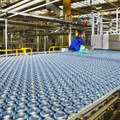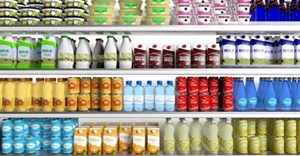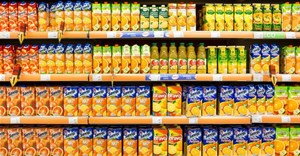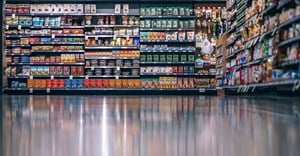
Subscribe & Follow
Metal packaging market share shrinks, but collection rates grow
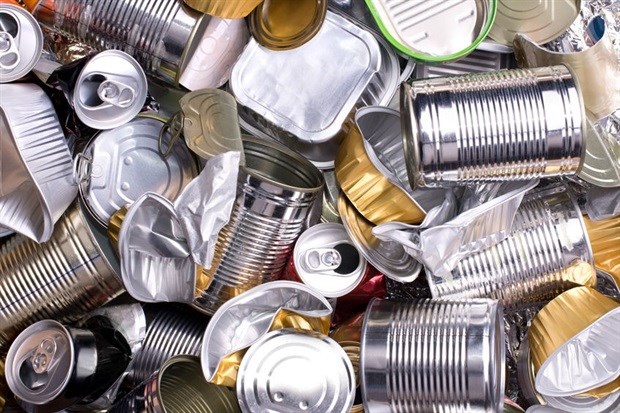
An impressive 75.8 % of all metal packaging that entered the South African market during 2017 was recovered, compared to 73% the previous year – making SA one of the leaders in the world when it comes to post-consumer metal packaging recovery. Internationally it is reported that 75% of all aluminium ever produced is still in use today.
According to Kishan Singh, chief executive officer of MetPac-SA – the producer responsibility organisation representing the steel and aluminium packaging industries in South Africa – this positive growth in post-consumer metal recovery is expected to continue.
“Like so many other sectors in South Africa, the metals packaging industry has not escaped the effects of the country’s economic slowdown. The beverage sector, in particular, was negatively impacted by the sugar tax that came into effect at the beginning of the year, resulting in a smaller slice of the pie of the local packaging market. Despite these obstacles, we have set ourselves aspirational collection targets for the next 7 years,” Singh says.
Industry contraction
Furthermore, the BMi report reveals that the metal industry contracted by 5.8% in volume and 0.8% in value in 2017. The report reveals that the metals packaging sector shrunk slightly to 162,000 tonnes, compared to 175,000 tonnes in 2016.
Singh agrees that while this contraction is expected to continue as the impact of continued light weighting and the switch from steel to aluminium is felt, he is confident that the market share will remain fairly constant at around 197,000 tonnes over the next five years, as a result of metal packaging becoming the preferred material, given the pressure from the government, with respect to industry waste management plans and circular economies.
“Challenging economic conditions are proving to be a key determinant in packaging trends across product categories in the South African market. Manufacturers are looking for ways to keep costs down and consumers are paying closer attention to the management of their household budgets. These economic pressures are having a diverse impact across, and even within, categories. As a result, we are seeing a growing demand for both smaller and larger pack sizes, plastic pouches and no-frills packaging,” Singh observes.
Convenience and health shaping demand in packaged food
Although keeping prices down remains a key factor in the packaged food industry in South Africa, changing consumer attitudes and lifestyles are exerting a growing influence on packaging developments.
Most prominent among these are the demand for more convenient packaging options that are compatible with the increased pace and on-the-go character of modern urban lifestyles and the growing popularity of packaging that appeals to the rise in consumer health-consciousness.
Economic factors drive demand for pack sizes
The South African non-alcoholic drinks market is seeing a notable trend towards smaller packaging - driven by economic factors, including a decline in consumer purchasing power and the introduction of the sugar tax. Singh postulates that even before the sugar tax came into effect in April 2018, it was already exerting a significant influence on the development of packaging in the non-alcoholic drinks industry, as soft drinks manufacturers shifted to smaller packaging in anticipation.
In contrast, however, the alcoholic drinks market has noticed a growing demand by budget-conscious consumers who are pushing for larger pack sizes and better value-for-money products, such as 400ml and 500ml metal beverage cans in beer.
Committed to creating a circular economy
“Living and working in a world of soon to be 9-billion consumers who are actively buying and using manufactured goods, we can no longer follow the old model whereby resources are extracted at ever-increasing rates without consideration for the environment in which we operate. We need a new way of doing business, and for this reason, everything MetPac-SA does is underpinned by the concept of creating a circular economy minimises our dependence on virgin metals by utilising metals that are already within the economy, in order to sustain metal packaging within South Africa for the years to come,” Singh expands.
Metals can be recycled without losing their original properties and metal packaging is therefore fully in line with the definition of a circular economy. Many metals are recycled at high rates and the preservation of their inherent properties after recycling classifies them as “permanent materials”.
For this reason, MetPac-SA says that metal packaging continues to be one of the world’s most valuable materials for collectors and recyclers, as it is used to produce new products such as cooldrink cans, food tins, foil trays, empty aerosols canisters, metal bottle tops and foil wrap at a far lower cost to the environment than making them from raw materials.
"For example, twenty recycled cans can be made with the energy needed to produce one new can using primary aluminium ingot. Every time metal passes through the recycling loop, the benefits are repeated, again and again and again. It is therefore clear that all packaging, but the metals packaging that we represent in particular, cannot be allowed to become waste,” Singh concludes.






